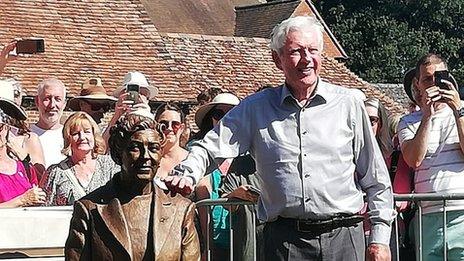Agatha Christie: Lifting the veil on the Queen of Crime
- Published

Many of Dame Agatha Christie's most well-known works have been adapted into films, including Death on the Nile
Dame Agatha Christie, one of the bestselling novelists of all time, but ironically, something of a mystery herself.
The writer, who died in 1976 aged 85, wrote 66 detective novels, 14 short story collections and more than 20 plays.
Many of her most well-known works have been adapted into films, including Murder on the Orient Express and Death on the Nile.
She spent more than 40 years of her life on the outskirts of Wallingford in Oxfordshire - but kept such a low profile that many of the locals did not know she lived nearby.
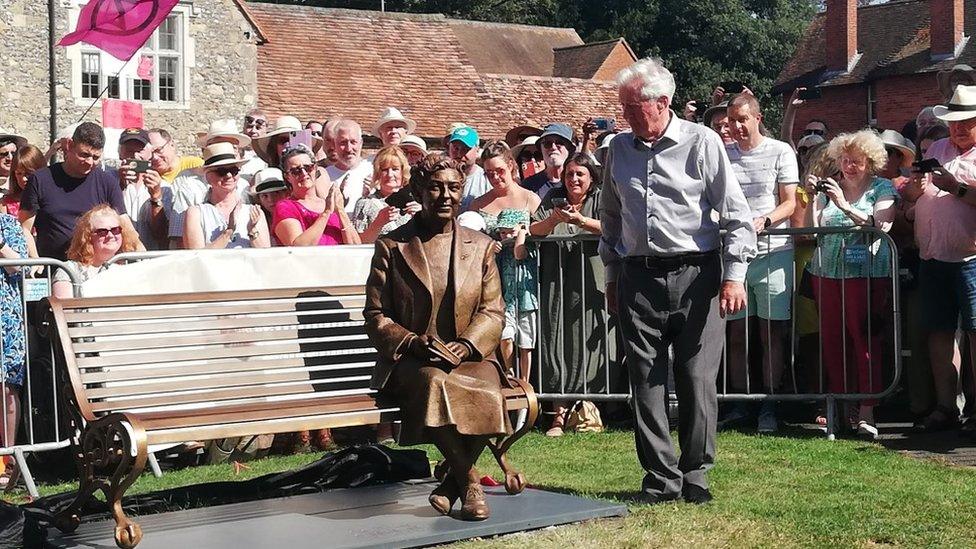
A statue of Dame Agatha was unveiled in Wallingford in September
Now, after a new statue of her was unveiled in the town, the BBC has been speaking to three people who spent time with the enigmatic writer - her gardener, her housekeeper's daughter and her grandson
At the age of 14, Arthur Honey took on a part-time job as a gardener at Winterbrook House, where Dame Agatha lived with her second husband Sir Max Mallowan.
He recalled how he "could not disturb her" when she was writing books in the garden, which she spent most of her time doing.
"Nine times out of 10 Agatha was sat under a tree, at the back, overlooking the river, writing books," he said.
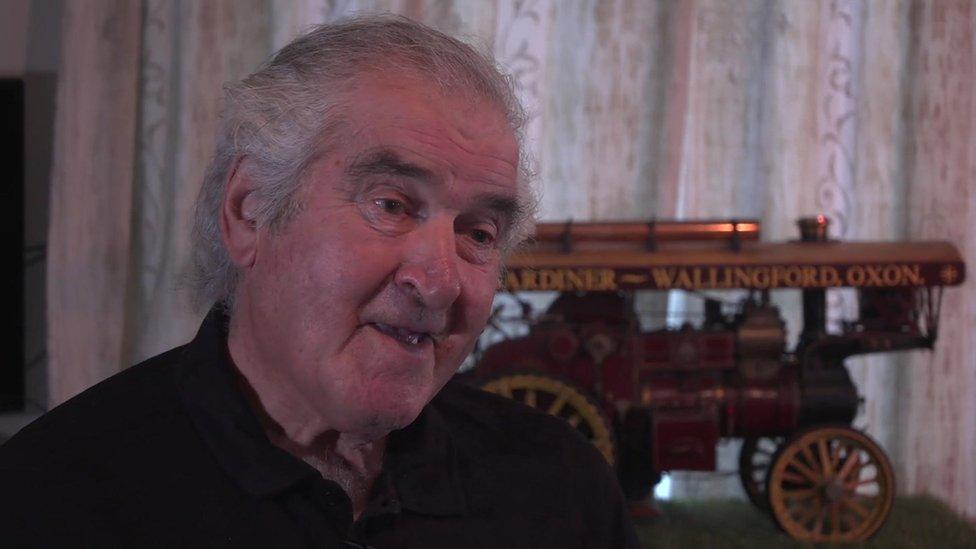
Arthur Honey was 14 when he took the job at Dame Agatha's house
When he had finished mowing the lawn, he would find her and she would offer him a drink.
"And I used to say 'yeah, that'd be nice' and she used to say 'you know where the squash is, you know where the water is - help yourself'. And that was it.
"She was a very down-to-earth sort of lady," he added.
Mary Vidgens' mother and grandmother were live-in housemaids at Winterbrook House in the 1940s and 50s.
"Agatha and Max were very kind people," she said.
"They gave mother this brooch when she got engaged to my father Edward, which is diamonds, gold and enamel."
She also recalled how Dame Agatha bought her a soft toy dog as a child.
"I was very happy to see her, and meet her," she said. "She was immensely silent in a way, but very powerful too."
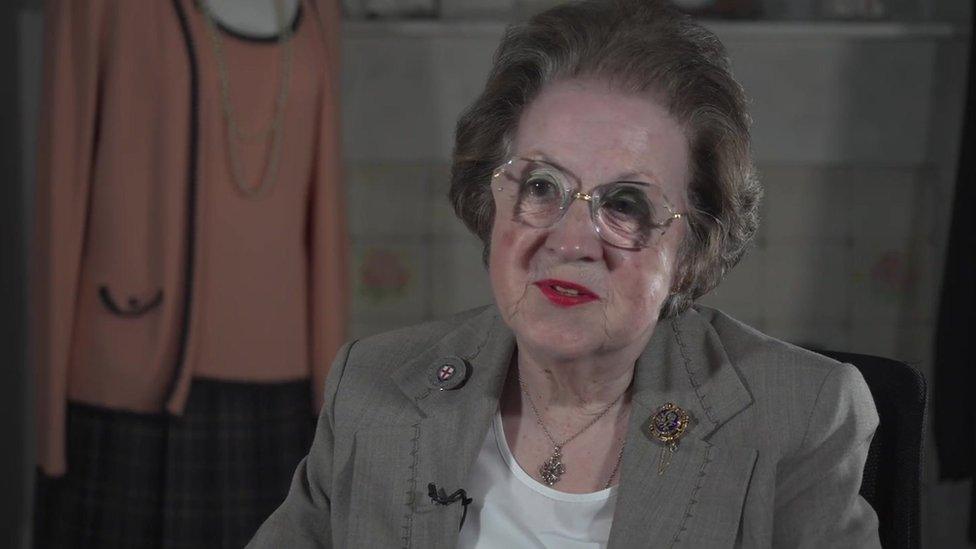
Mary Vidgens still proudly wears the brooch Dame Agatha gave her mother
Ms Vidgens said the author, who tried to keep a low profile, sometimes attracted unwanted attention but she took it in her stride.
"Two ladies followed her and one said to the other 'that's her, that's her, that's the writer'," she said.
"And Agatha obviously heard them and turned round and said 'yes, it's me, it's me, I'm the writer'."
'I belonged'
Dame Agatha's grandson, Mathew Prichard, used to come to Winterbrook as a child.
"I first used to come here when I was seven or eight, feeling miserable because I had to go back to school immediately after the lunch that we had," he said.
"That was so important to me, because it meant that I actually belonged as part of my family."

Grandson Matthew Prichard used to come to Winterbrook as a young boy
He remembered his grandmother as a modest, shy individual - something he attributed partly to her mysterious 11-day disappearance in 1926.
Following the death of her mother and the breakdown of her marriage, Dame Agatha left her daughter, her home and vanished.
Her car was discovered abandoned several miles away the following morning and a nationwide search was launched.
She was found 11 days later, checked into a hotel in Harrogate under a false name and suffering from memory problems. She never told her friends or family what happened.
"She had an unpleasant incident early in her life and that really put her off being in public at all," Mr Prichard said.
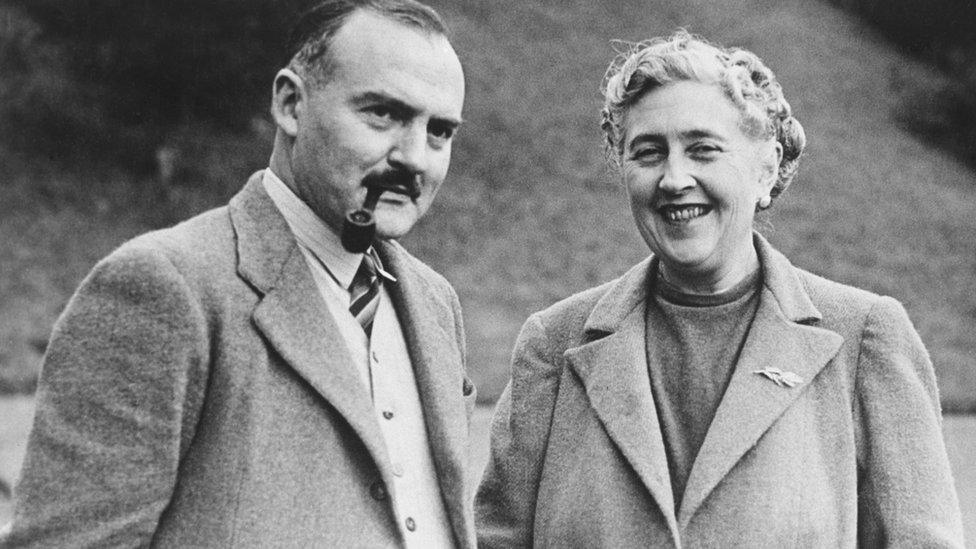
Dame Agatha with her second husband Sir Max Mallowan
But it was her introversion that helped her succeed, according to her second husband.
"What was truly valuable in Wallingford was her privacy, and freedom from social involvement," he wrote after her death in 1976.
"For in this way she was able to devote her time to creative work which gave pleasure to millions."
Related topics
- Published9 September 2023
